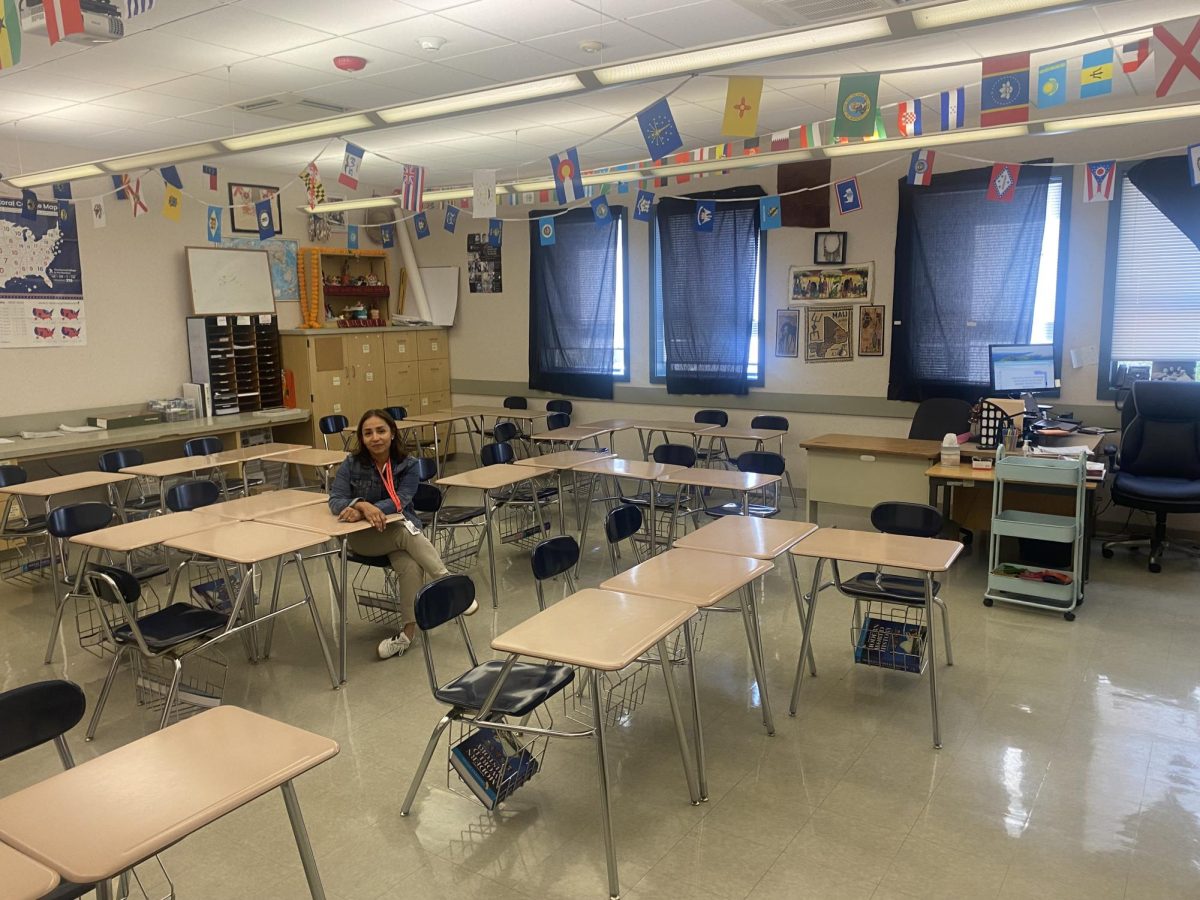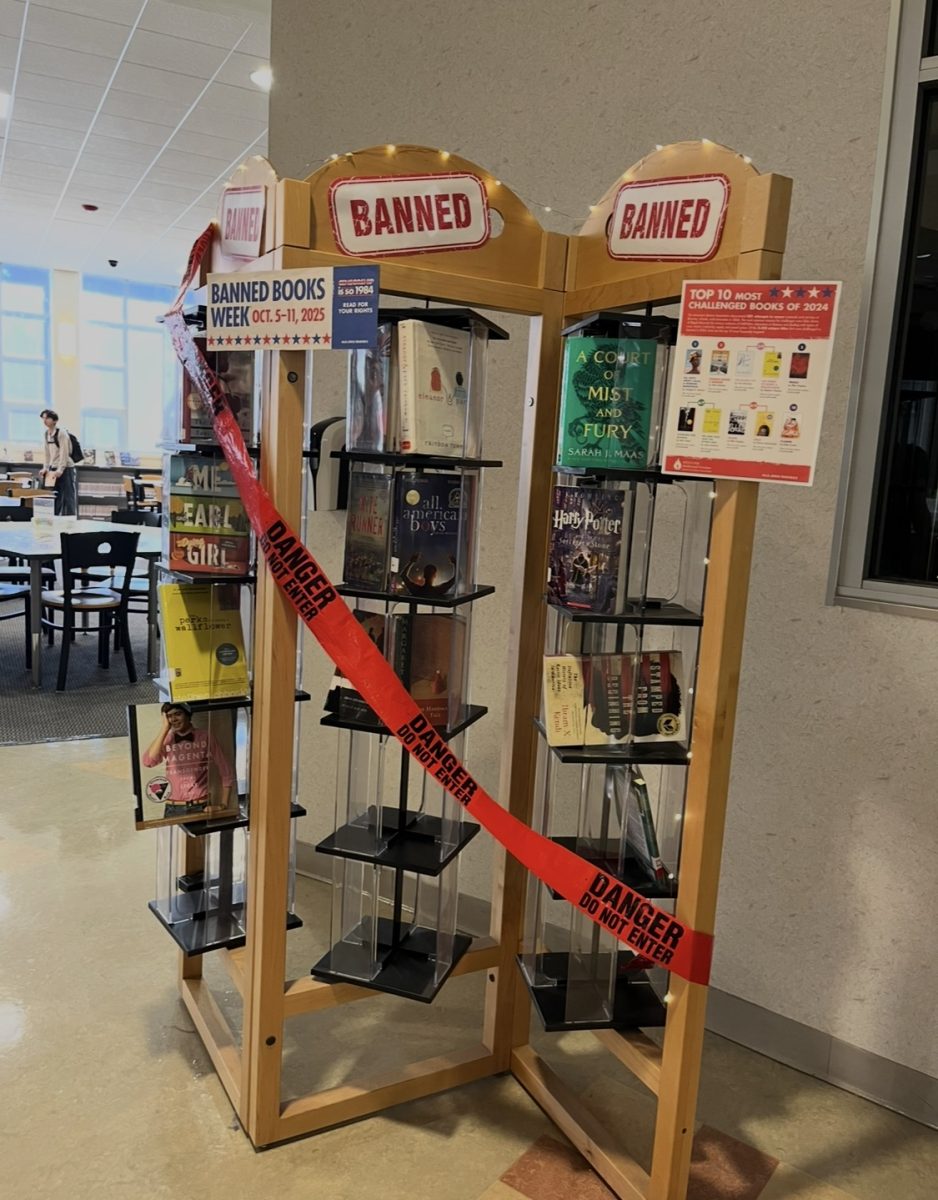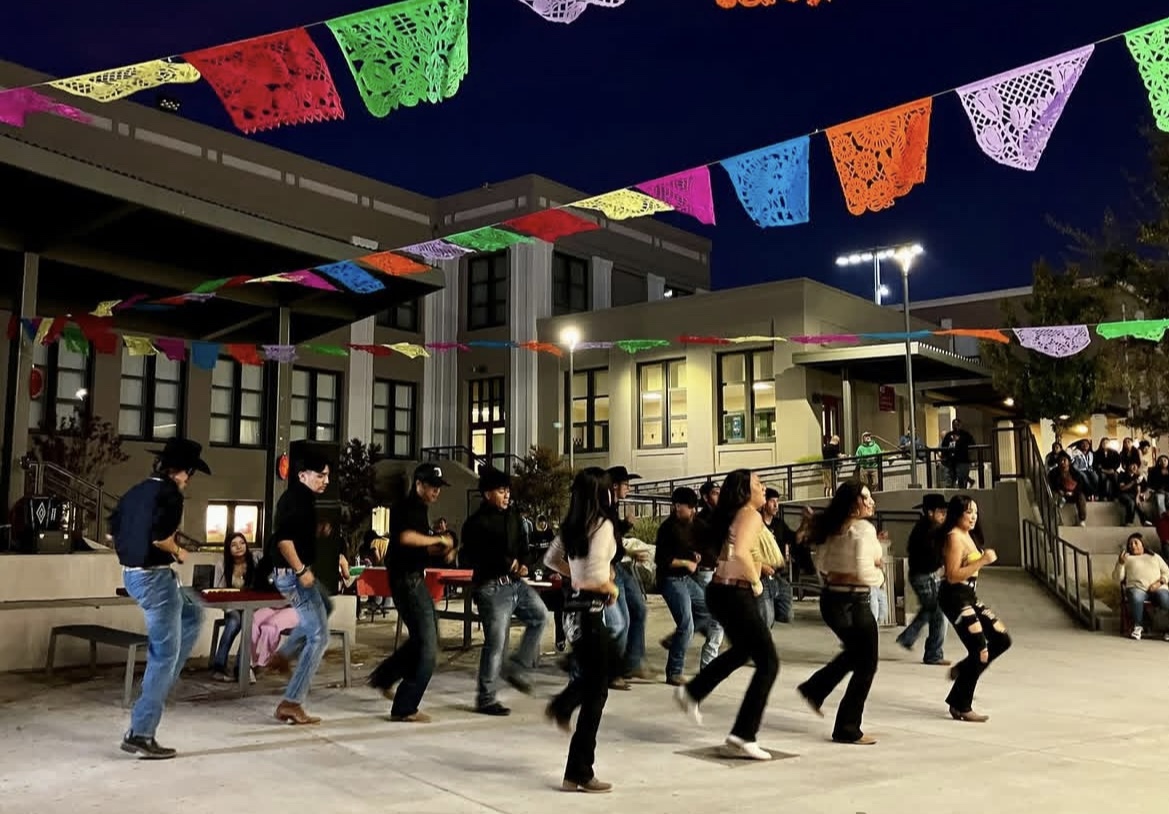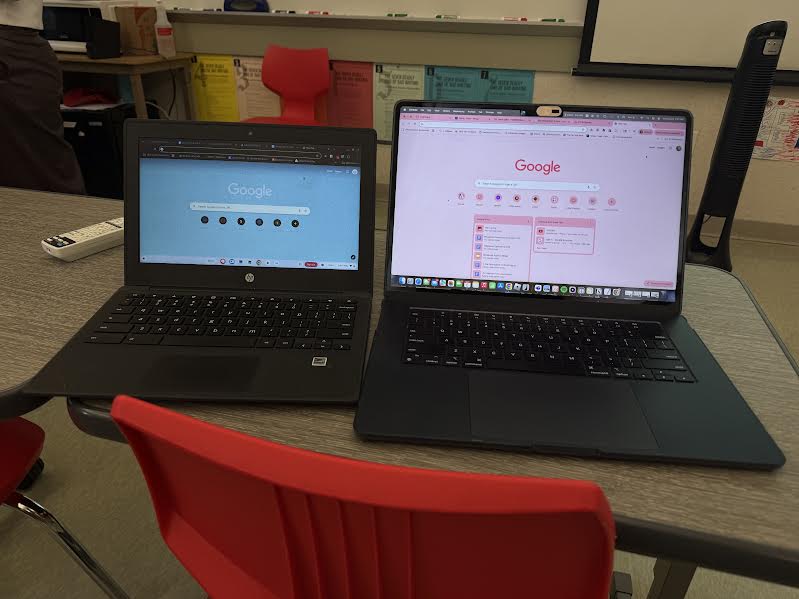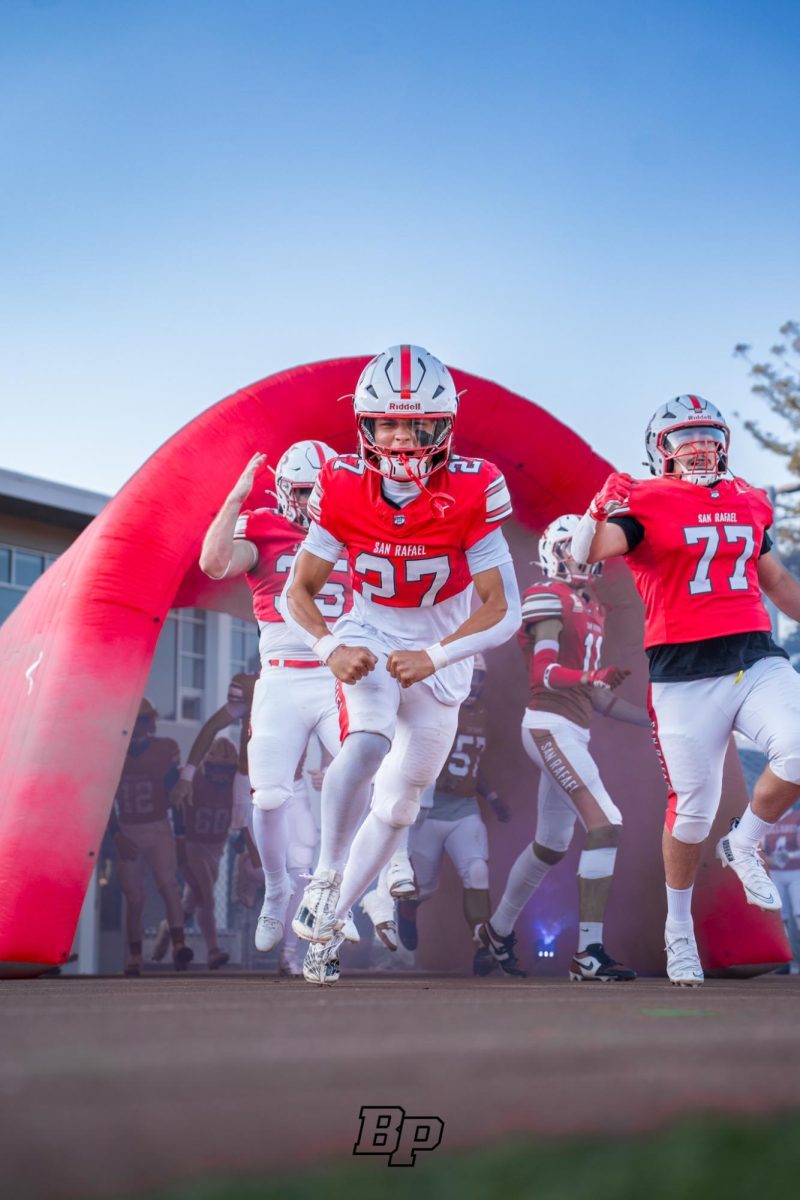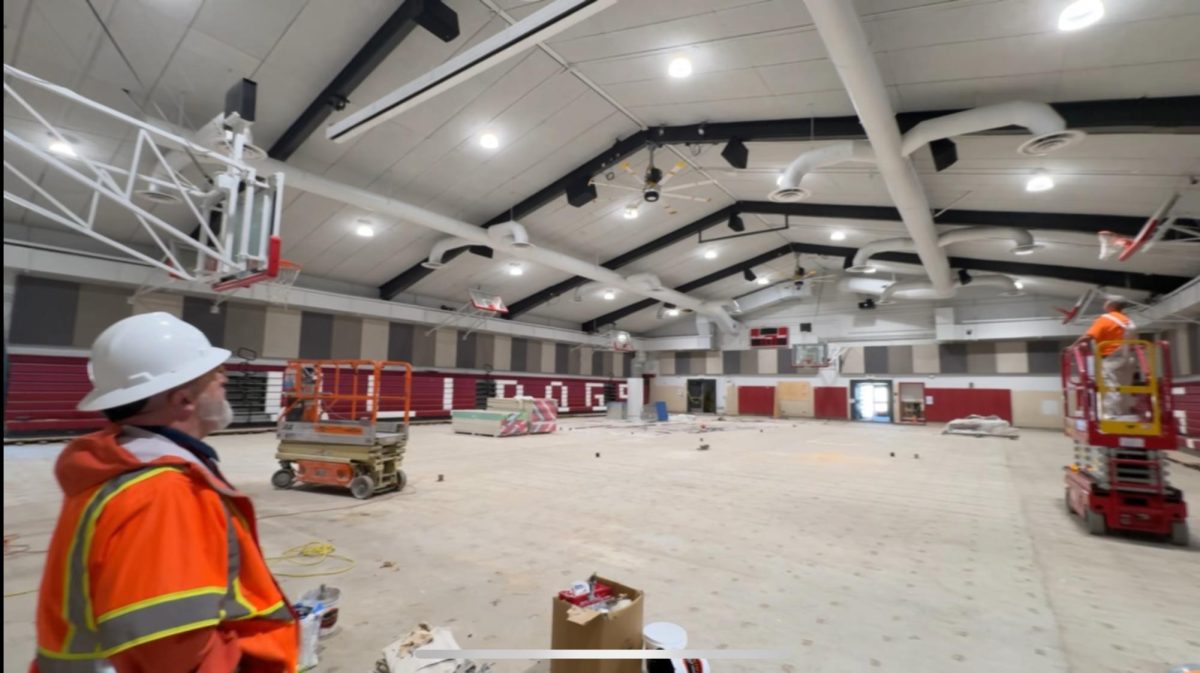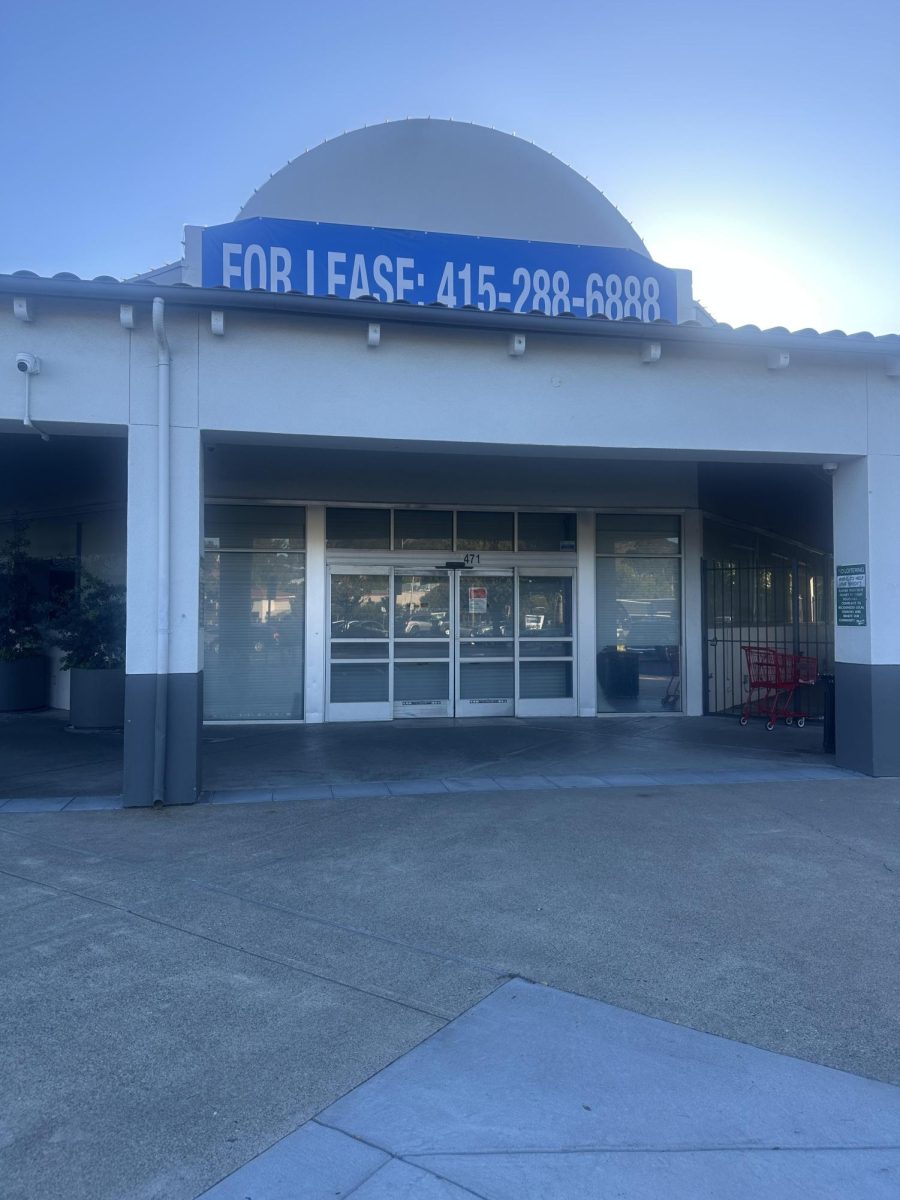This year, San Rafael High School math teacher, Juan Pommier, has a rare 39 students enrolled in his first period AP Statistics class. This number, paired with a major increase of students present in his normal CP math classes, has been different from what he is used to teaching.
“I have less time to meet the individual needs of them,” answered Mr. Pommier regarding teaching a 39 student class. “But honors students typically need less individualized attention.” His worry is more focused on the lower level classes that have increased by almost 10 students over the past few years.
“They need more 1 on 1 attention,” he said, referring to his lower level math classes. “It makes it very difficult, if there is a class of 30, to try and give each kid individualized attention.”
The challenges that Mr. Pommier has faced regarding his classes increasing, have also been reflected and recognized throughout the whole school community.
As a public high school, San Rafael High has a limited budget, and the goal of counseling is to put each student in all of their requested classes. This causes classes to get larger due to fewer class periods, teachers, and classrooms, ultimately leading to an increase of students per class.
Counselor Daniel Nemiroff is aware of this increase. “I would love for our classes to be a little bit smaller; I think that would be beneficial to students and teachers alike,” he said. “It’s more about the budget we are lotted to meet the request that the students make.” Nemiroff states that because of the school’s budget, the school wasn’t able to make that change, but as a counselor, he isn’t able to speak more in depth about the school budget.
Someone who is, though, is Principal Joe Dominguez. When asked if there was a solution to reducing larger class sizes, like adding more periods, Dominguez had a more detailed answer.
“The district is looking at their budget and determining based on enrollment, how many contracts each school gets,” said Dominguez. Principal Dominguez combines how many students want to take a class with the amount of budget he receives from the district for teachers. He then figures out how many sections of each class he can offer to the students using this information.
This is easier said than done, as he has to often predict student’s situations in order to estimate a class size. Dominguez explains, “I have to try to predict if I need to have students repeat certain classes, so if I have a bunch of students that fail Algebra 1 for example, I don’t know exactly how many that’s going to be, and all those kids need to retake that class, so that could increase the number of student that are in that class.”
Due to lots of unexpected changes, the end result is an increase in more students per class, leaving a larger difference in student to teacher ratio at around 22:1. This number is gigantic compared to smaller private schools like Marin Academy with a student ratio of about 8:1. MA is able to have this benefit due to it being a competitive private school with a tuition of $61,670. The substantial amount of money Marin Academy is receiving through tuition allows them to hire more teachers, add more classes, and ultimately lower class sizes through admissions decisions to satisfy their students. This is an advantage San Rafael High does not have.
Our SRHS community is aware of the increase, and students have some thoughts on how a larger class size may affect their learning.
When asked his preference in learning in a smaller class or a larger one, sophomore Rocco Brovelli said, “Smaller classes. I get more teacher attention.”
“My mom wants me in smaller classes, she says I learn better in them,” said freshman Lyuba Von.
Parents have opinions about this issue too. When asked if class size was one of the factors causing the switch to private high school, and whether it was beneficial to her son, former San Rafael High parent Melissa Testa provided her reasoning: “Absolutely, I think any kid is going to benefit from a smaller class size, hands down.” She then brings up a point about the distractions that come with bigger classes. “Various outside influences can cause any student to not fully focus on the lecture being told. When there are less students, you get more 1 on 1 attention, everyone kind of stands out,” said Testa.
Standing out in a big class can be hard. Having easy access to your teacher means more support and help with learning. Private schools have more funding, and do not need to accept more students as the population grows. Public schools don’t have that benefit, so it will be interesting to keep an eye out on the increase of class sizes. More specifically, if that number continues to rise, and how it might affect the typical student’s learning.

